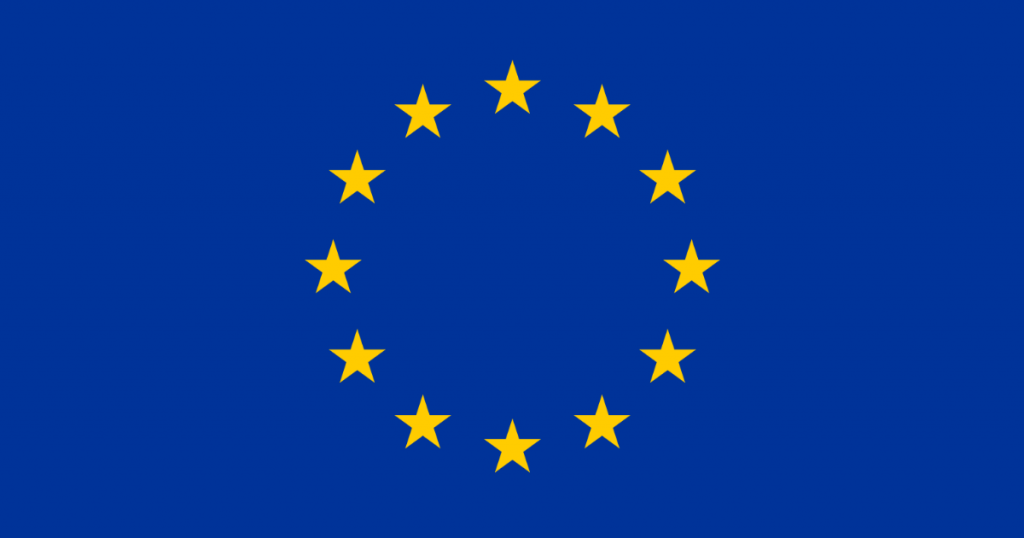
What is the European Union? Infographics of the EU System 2021
- European Union, Guide and tips
Why are we, Humanitarian Designers, writing about the EU? Because “the EU, together with its member countries, is the world’s leading humanitarian aid donor. In 2014, some 121 million people from over 80 countries received help from the EU, amounting to over €1.27 billion. […] As a leading donor, they have implemented goals, principles and procedures for implementing EU humanitarian aid operations.” (Source: EUR-Lex).
The series of articles about the EU will not only talk about the humanitarian side of the EU, but also explain how the EU works and where to apply for a job. Why doing this? Because, we couldn’t find a proper “EU system chart” like the one we shared on our previous article about the UN. We had to do our own research to understand this complex and diverse structure. We gathered so much information that we felt we had to compile it and share it. This come with our own infographic, maybe presenting one of the first complete and detailed EU system chart at the end of the article. So… what is the EU?
Table of Contents
Introduction
Let’s put history aside and focus on how the EU is functioning today: what are the actors, what do they do, how do they interact with each others? The idea is to get a global understanding of the 2021 EU system.
1. The four concepts to remember
If you want to read more about the history and who are the 27 EU Member States, you can find plenty of articles online (here and here). As a resume, here are important notions to remember:
- You will often here about the (several) Treaties. While treaties may seem as “somewhat important historical facts” they actually define what is the EU and how it works, as much as any NGO is defined by its status. The treaties are called “the primary law”: every action taken by the EU is founded on the primary law.
- The European Union has defined “European Values”: freedom, equality, democracy, rule of law, respect for human dignity and human rights. A EU Member State systematically violating these values can be sanctioned.
- The European Union has a unique status. It’s neither an organisation, like the United Nations, nor an European state. It’s a Union of Member States. To define this, people often refer to the idea of “sovereignty”. Countries remain independent but have pooled some of their sovereignty in order to gain strength and the benefits of size in a globalised world.
- A right balance of “decision-making power” must be found between national governments and EU level to avoid conflicts. In the EU, the principle of “subsidiarity” means that decisions are retained by Member States if the intervention of the European Union is not necessary. The EU institutions deal with a number of policies: some are their exclusive competence but some are shared or supporting competences to the EU Member States.
2. The buildings
The institutions and their structure
Even though the functioning of the EU lookalikes a government, the names used to describe these bodies are different from traditional governments. It might be confusing at first but the main goal is to reassure the EU Member States that their sovereignty is safe.
The power is distributed to the seven institutions. Here we will focus on the main four institutions:
- The European Commission represents the EU’s interests.
- The European Parliament represents, and are elected by, the European citizens.
- The Council of the European Union represents the Member States.
- The European Council is made up of the heads of state and heads of national government.
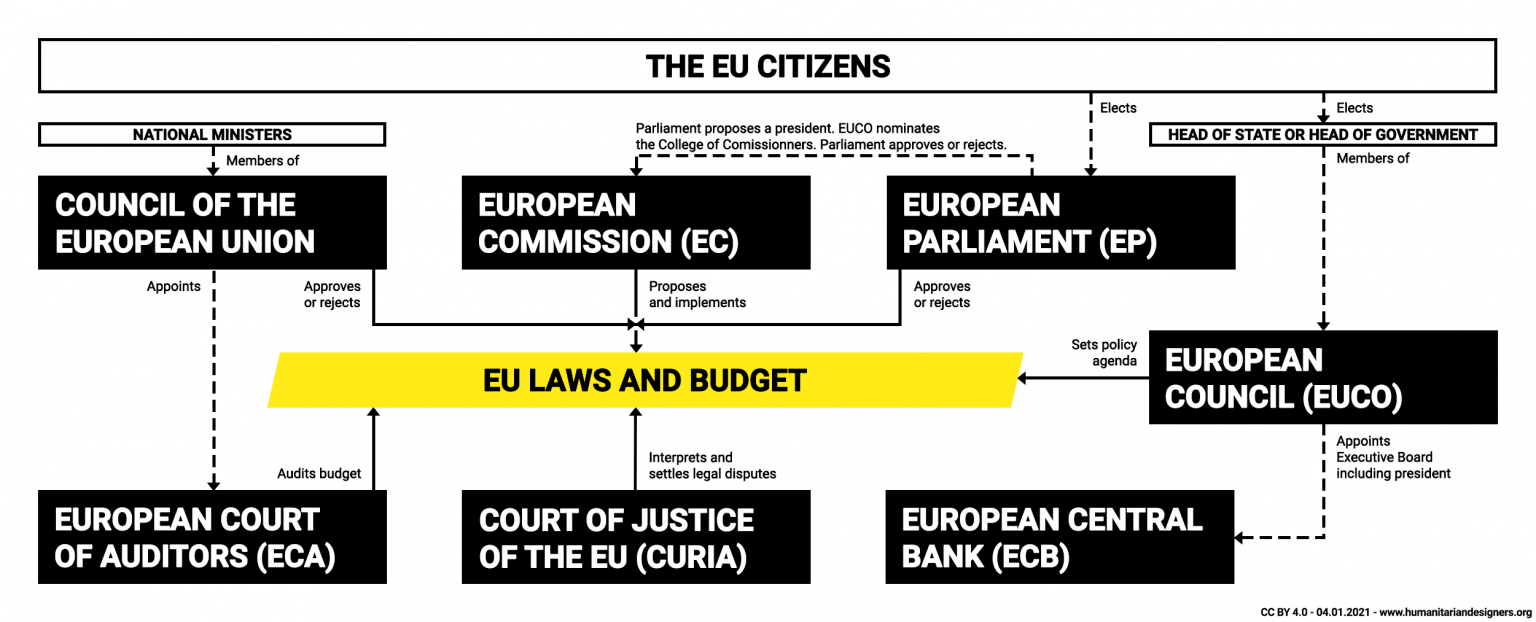
Now that we have the base layer, let’s dive in.
NB: The complete infographic is at the end of the article. You can use it to read along the article as the article is mainly to explain further in details information that couldn’t fit the infographic.
The EU citizens
If we have to start somewhere, it should be from the 447 million EU citizens.
The electors are voting two times:
- to elect their national government. Once elected, the heads of state/government of each Member State become members of the European Council. And all the ministers, representing the different ministries of each government, become part of the Council of the European Union.
- to elect, every five years (years ending with 4 and 9), the Members of the European Parliament (MEPs).
The European Council
1. What is it?

The European Council is a small institution but because it represents all the EU Member States, and their individual powers, it is an institution that has a direct impact on the EU functioning:
- They define the overall Strategic Agenda of the EU.
- They propose the people that will compose the “College of Commissioners” (read EU Commission’s chapter) which are the ones shaping EU policies.
2. The Strategic Agenda (2019-2024)
The Strategic Agenda of the European Council for 2019-2024 is a document that sets up the EU overall policy direction and provide guidance for the work programmes of other EU institutions. It focuses on four main priorities addressing 38 policy areas:
- protecting citizens and freedoms.
- developing a strong and vibrant economic base.
- building a climate-neutral, green, fair and social Europe.
- promoting European interests and values on the global stage.
The Council of the European Union
1. What is it?
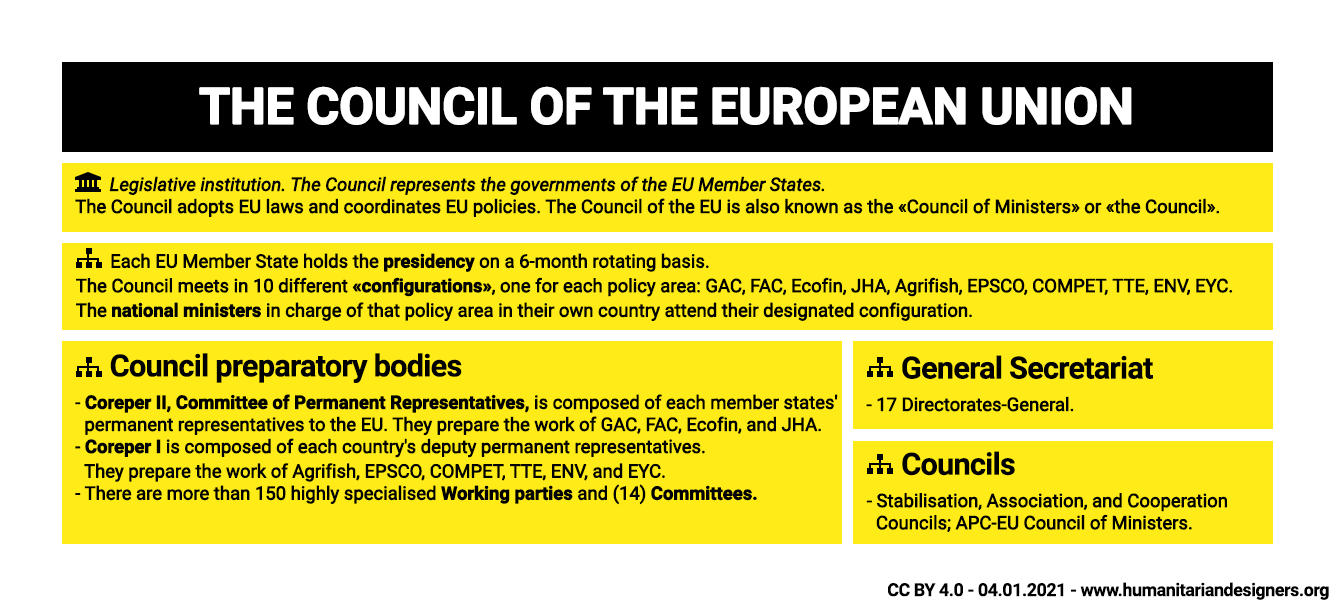
To understand a bit better the relations between the several bodies of the Council, we can advise you to watch this animation (and playlist).
We do know that a lot of confusion is rising between the several Councils, so let’s bring some clarity:
- the European Council, also called EUCO, reunites the EU leaders. We saw it first.
- the Council of the European Union, also called “The Council” or the “Council of Ministers”, involves the ministers of each EU Member State.
- the Council of Europe is an international organisation not related at all with the European Union.
The European Parliament
1. What is it?
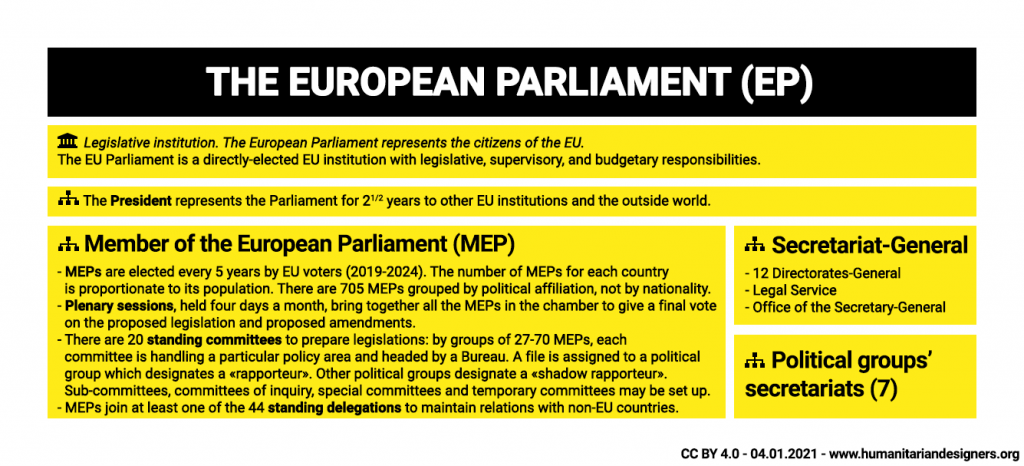
2. The election process
Every five years you have to vote for MEPs that will represent you at the European Parliament. The election is a bit complex between the national and European Political parties. It is important to add that the Parliament has been gaining more power through the years so our vote is more and more important.
2. The legislative train schedule
We couldn’t resist to present the Legislative train created by the Parliament. It’s an interesting way to visualize and understand how EU law is being made and quickly dive into specific policies.
The European Commission
1. What is it?
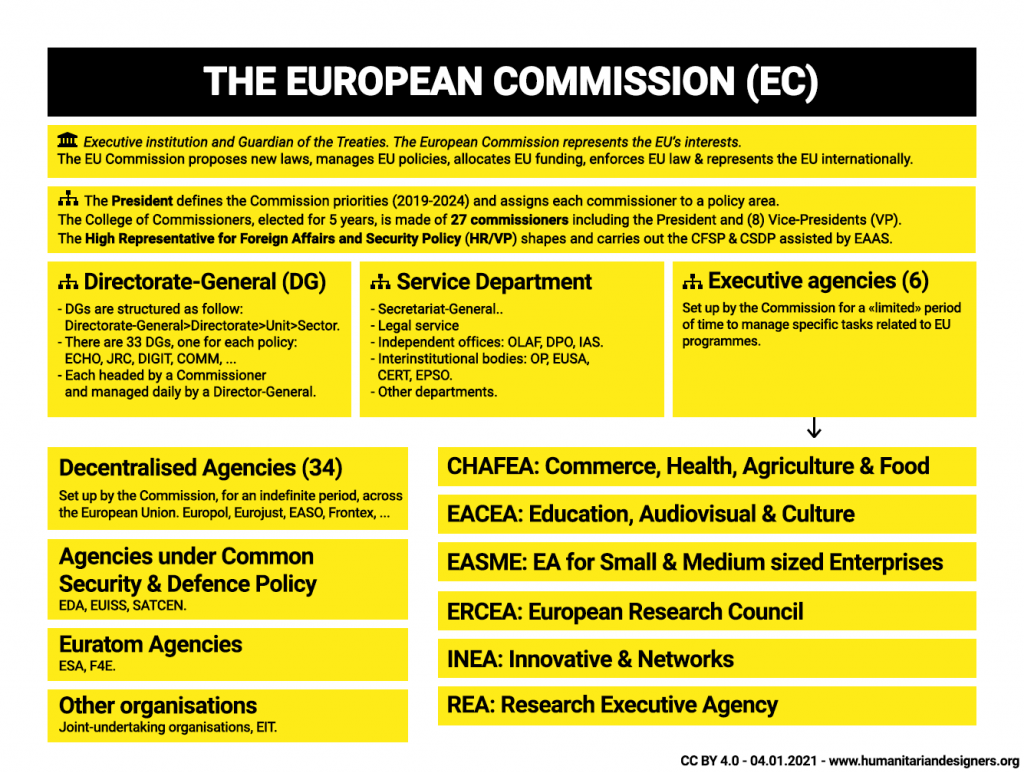
The European Commission is the executive institution and therefore a lookalike “governing body of the EU”. Using a similar analogy, Commissioners could be called “ministers of the EU” and the Directorates-General of the Commission, “ministries”. It employs about 32.000 EU civil servants which is more than 2/3 of the total amount of employees working for the EU institutions.
The Commission is in charge of proposing new laws but also executing the EU programmes so the chart is divided into three parts:
- The internal classic hierarchy.
- The six Executive Agencies: the main bodies in charge of managing the “Community programmes” addressed to the European citizens.
- The decentralised agencies: disseminated across the EU, their goal is to contribute to the implementation of EU policies on technical expertise and cooperate better with national governments. The total budget of all the decentralised agencies is approximately 0.8% of the EU’s annual budget.
2. EU Commission: the nomination process
- Each European Political Party (Parliament) push forward one spitzenkandidat: a candidate to become the new president of the European Commission.
- These candidates are decided before the European Parliament election so EU citizens can indirectly vote for the candidate they would like to see leading the Commission.
- The European Council, made up of EU leaders, officially nominates a candidate by qualified majority. They can refuse the candidates proposed by the Parliament. It happened in the 2019 election: the spitzenkandidat from the leading party was deemed unqualified. The European Council, instead, nominated another member of the leading party: Ursula von der Leyer.
- Once nominated the candidate must be approved by an absolute majority from the Parliament.
- Each EU Member State (European Council) propose a candidate to the newly president-elect. The president assign these candidates to a specific policy area. If the president refuse a candidate, the Member State must propose someone else. In 2019, the president-elect asked the EU Member State to propose two candidates (male & female) to be able to create the first gender-balanced Commission.
- Once finalised, the Parliament has to evaluate each of the commissioner-designate individually. Their conclusions of the hearings can lead the president-elect or the European Council to change their commissioner-designate.
- The Parliament, then, approves the College of Commissioner as a whole by a majority.
3. EU Commission: Commission Priorities (2019-2024)
The Commission priorities is set up by the President of the European Commission during its candidacy. The priorities for 2019-2024 are the following:
- A European Green Deal.
- A Europe fit for the digital age.
- An economy that works for people.
- A stronger Europe in the world.
- Promoting our European way of life.
- A new push for European democracy.
4. Executive agencies
The executive agencies interesting us the most is the EACEA (2020 annual work programmes). Indeed, they have well-known programmes:
- Erasmus +: to support education, training, youth and sport in the EU;
- Creative Europe;
- Europe for Citizens;
- EU Aid Volunteers Initiative: humanitarian-related working opportunities outside Europe;
- Intra-Africa Academic Mobility Scheme;
- European Solidarity Corps: volunteering, traineeships, and solidarity projects for people from 18 to 30 years old.
The Eu law
Now that we know more about the institutions, we will see how the EU policies are made. We have seen that the EU Commission was in charge of drafting and executing the EU policies. And, if it wasn’t clear yet, that the Council and Parliament are co-deciding and must both agree for a policy to be accepted. The voting process of a proposal is called the special or the ordinary legislative procedure.
1. The ordinary legislative procedure
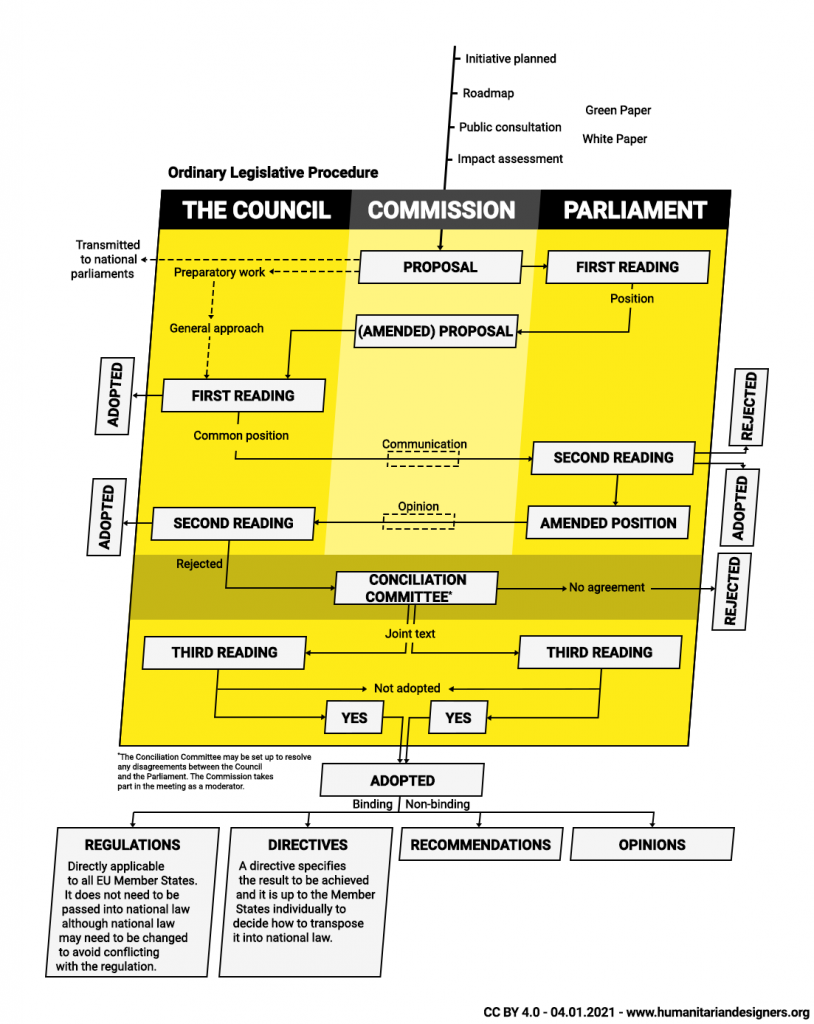
Edit from guggeis in the comment: “According to the the ordinary legislative procedure only regulations, directives and decisions can be adopted by the EP and the Council. Recommendations and opinions are non legislative acts and are not adopted by the two legislators jointly.”
While the procedure seems quite complex, it’s important to remind that most of the EU proposals are being adopted at first reading. From 2009 to 2014, during the Junker commission, a total of 396 proposals under the ordinary legislative procedure were adopted (source):
- 89% of the files were agreed at first reading. On average, it took 18 months for a proposal to be adopted on the first reading (from publication until the signature).
- 10% were adopted in so-called early second readings, when Parliament adopts a pre-negotiated (between Parliament, the Council and the Commission) Council first reading position without amendments, meaning the act is adopted. The average length of the procedure for early second reading agreements was 39 months.
- Only 1% were agreed at the second reading, for an average period of 40 months.
- There was no conciliation procedures.
Voting procedure: how are the proposals accepted by an institution?
- For the Council to approve a proposition, it must have a majority: it means either 55% of EU Member States or 65% of total population (based on the votes of the member states). They also must have less than 4 veto.
- For the Parliament to approve a proposition, it must have a simple majority during the plenary session: it means “50% + 1 vote” of the total number of votes.
EU Budget
1. Revenues and expenditures
2. The Multiannual Financial Framework (MFF)
The MFF defines the long-term EU budget. It’s probably the most important framework for the EU as it defines where and how the budget will be used for the seven years to come.
The MFF 2014-2020 will be replaced by the 9th MFF 2021-2027 in January 2021. The MFF is adopted through a “special legislative procedure” explained in the video.
Infographic of EU budget allocation for 2021-2027 MFF (made before the final approval from the Council).
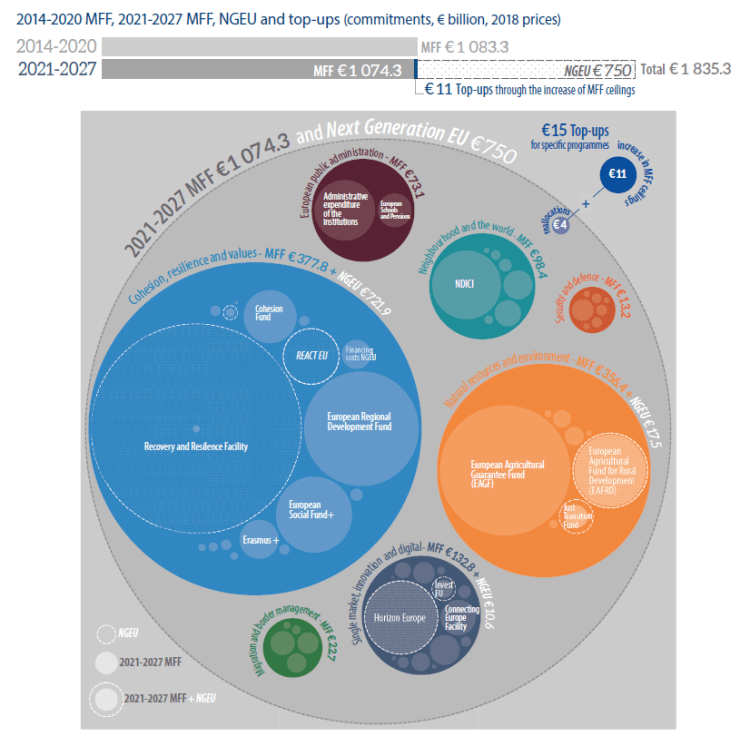
3. The budget procedure
Each year’s budget sets out the amounts agreed in advance according to the MFF. This EU’s annual budget is adopted following the budget procedure.
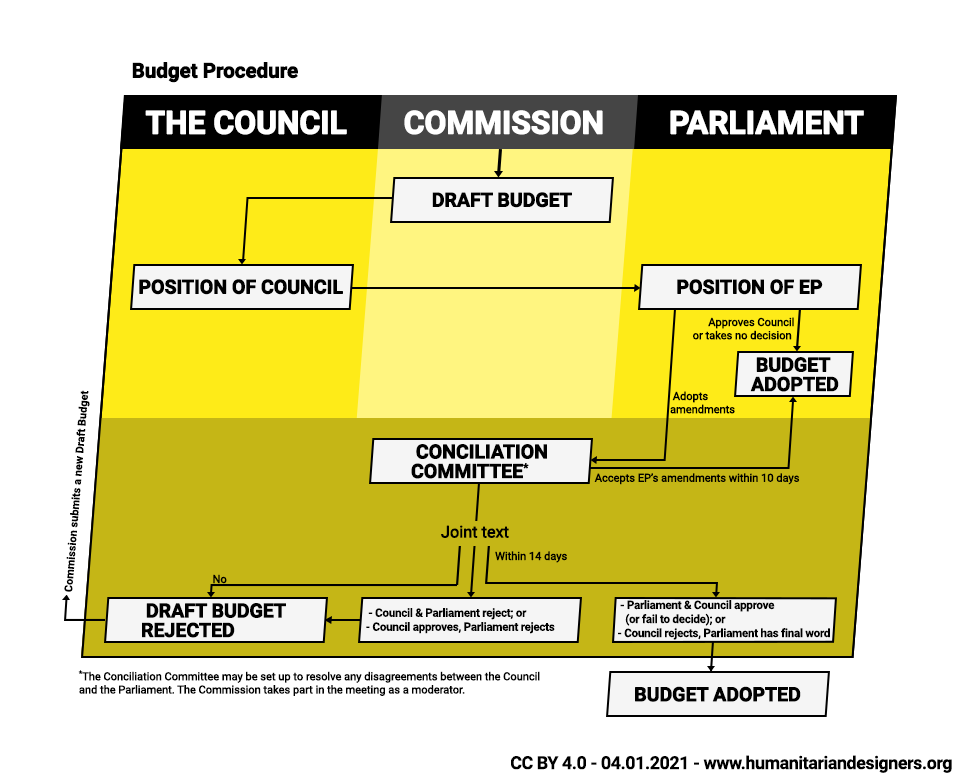
The infographic of the EU system
Now that we have explained all the institutions, bodies, and procedures, we are happy to share the complete infographic of the EU System.
Have you spotted a mistake? Do you have more information to share? Tell us in comment! It’s important because information is always evolving. We might update the infographic once in a while 🙂

Cédric Fettouche
Cédric Fettouche works as a design strategist for the European Commission on the New European Bauhaus Initiative.
After three years of humanitarian experience in Greece and Central Mediterranean, he founded the NGO Humanitarian Designers (HD) in 2021 to bridge the gap between the design and humanitarian sectors.
Passionate about design and societal challenges, he strives to experiment his committed vision into new sectors, and share his learnings back to the design communities. You can contact him on Linkedin or on the HD Slack.
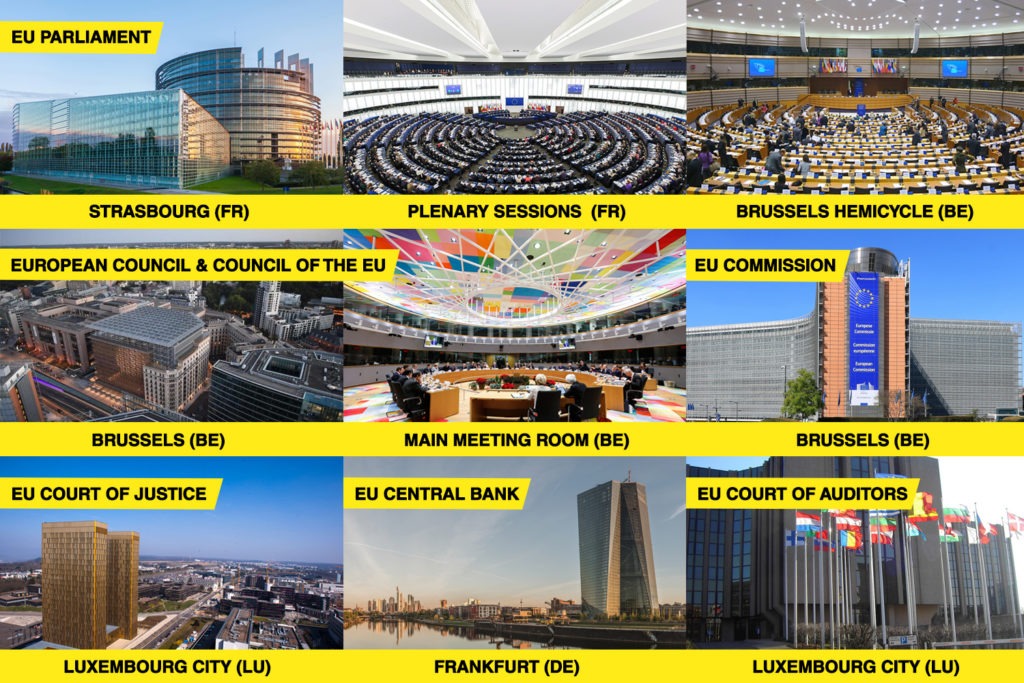
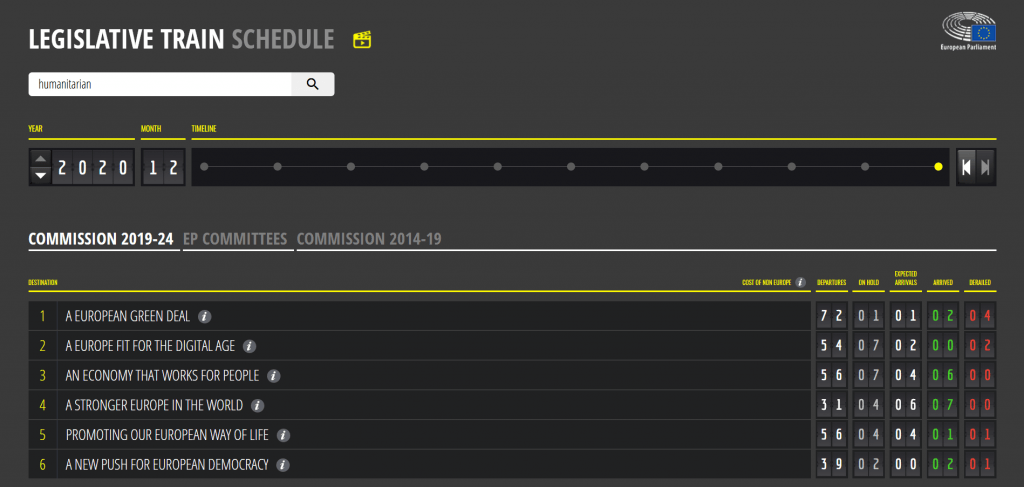
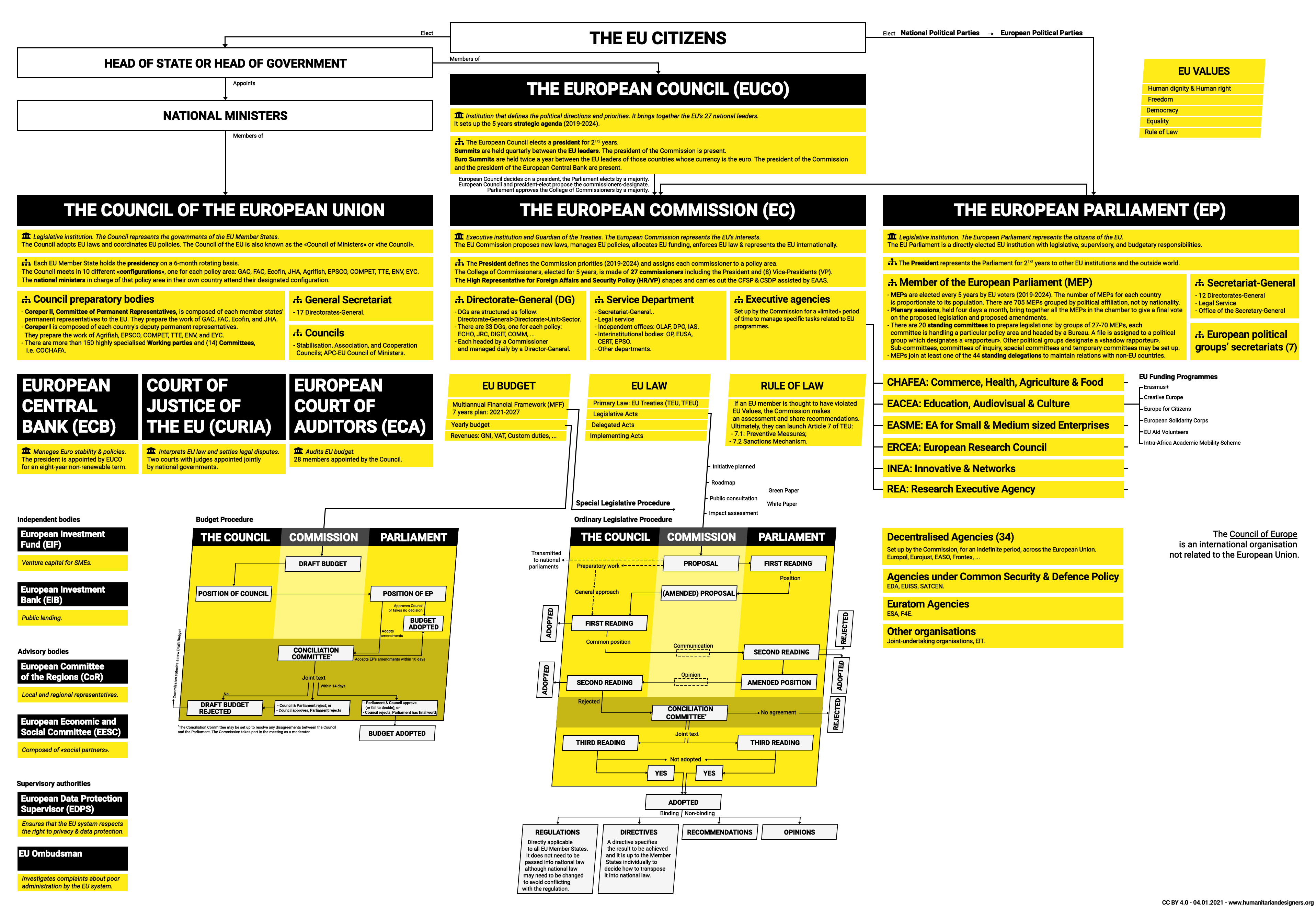

Excellent work!
I’ve spotted two thinks:
1) the number of DGs at the Council are, according to the internal staff Charter, 12 (please verify)
2) the names of the acts at the end of the infographic ‘ordinary legislative procedure” are misleading: it seems that the OLP can lead to the adoption of 4 legal acts (two binding and two non binding) . According to the the ordinary legislative procedure only regulations, directives and decisions (missing in your infographics) can be adopted by the EP and the Council. Recommendations and opinions are non legislative acts and are not adopted by the two legislators jointly.
Thanks a lot for your valuable comment 🙂
– Indeed, I see that I wrote 17 instead of 12. My first assumption is that I counted the number of categories in the “Who Is Who” EU database and didn’t realise that some of them were sub-categories of GSC.
– Thanks for this information. Indeed it’s important.
If you have more feedback, feel free to complete your comment!
PS: I have added notes in the corresponding sections of the article.